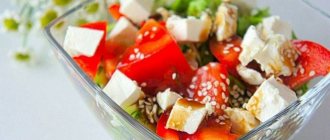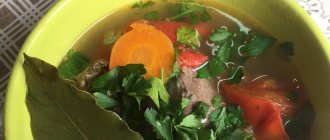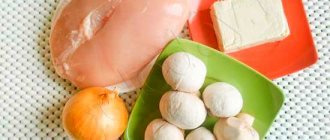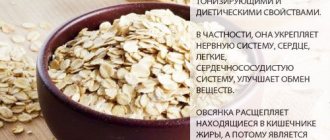Composition of Almette cream cheese
Almette soft cheese was first produced in Germany. Almette curd cheese, according to the manufacturer, is prepared only from natural ingredients. So, the basis for making cheese is cream and milk.
In addition to dairy products, Almette also contains additional components:
- whey;
- whey protein;
- table salt;
- lemon acid;
- purified water;
- natural flavoring additives.
Calorie content of the product
Since Almette cream cheese is prepared on the basis of cream and milk, it would be completely illogical to expect low calorie content from it. 100 grams of the fermented milk product in question contains from 215 to 235 kcal. Calorie limits are determined by the specifics of a particular type of Almette. Moreover, 20 grams for every 100 grams of product are fats. Due to its high fat content, the product is not entirely suitable for breakfast and snacks during a diet.
Despite such a high calorie content, Almette has fairly high nutritional value. Therefore, if you do not abuse the product in question, it can be included in a person’s daily diet.
Reference! The daily intake of cheese is 50 grams. If you do not exceed the specified limit, the product will exclusively benefit the human body!
Useful properties of Almette
Almette contains a lot of vitamins and beneficial microelements. Almette is rich in B vitamins, which have a beneficial effect on the functioning of the nervous system. Also, the fermented milk product in question contains a lot of phosphorus and calcium, which ensures rapid restoration of bone tissue and their compaction. And vitamin A present in fermented milk products is good for vision.
Creamy Almette with the addition of herbs is healthy in its own way: it contains a whole storehouse of vitamins and minerals. After all, even when dried, greens do not lose their beneficial properties. Garlic Almette, as you know, is very healthy thanks to garlic, and the vegetable-based cheese is rich in fiber and other microelements and vitamins beneficial to the body.
And thanks to the high content of dairy products in Almette, we can say with confidence that it has a positive effect on the functioning of the whole body.
Flaws
According to expert estimates, Almette has several main disadvantages:
- loose consistency that does not meet the production standards of this fermented milk product;
- Almette contains starch and a lot of phosphates, although they are not listed in the composition;
- in fact, nutritional value indicators are lower than indicated by the manufacturer;
- quite high cost.
If we talk about contraindications, then Almette is not advisable in the diet of people who have an individual intolerance to any component of the fermented milk product in question.
And due to the high calorie content of the product, it should not be eaten during weight loss or obesity. In addition, since the product contains a lot of calcium, it is extremely undesirable for people suffering from urolithiasis to consume it.
Selection criteria for weight loss
To prevent a low-calorie diet and physical activity from becoming a useless exercise, you need to be extremely careful about the products that are included in the menu of a person losing weight. Dietitians insist on “researching” the composition of cheese and consider the following points when choosing:
- what is the fat content of the product - you need to look for the fat level per 100 g of cheese;
- how much protein is there in 100 g;
- calorie content of the product;
- taste qualities of cheese.
Doctors recommend introducing cheese with a low fat content into the menu - a maximum of 17%, although you can also eat a 25% product, albeit in small quantities (this is not even 100 g per day!). But it may contain a lot of protein. This component takes an active part in strengthening muscle tissue, and it needs it, as it is under constant tension.
Delicious recipe! Home business cupcakes
Moreover, strong and constantly growing muscles “consume” a lot of calories for this process.
You need to learn to evaluate the taste of the product. For example, cheeses that are too salty and spicy, with various additives and flavorings are definitely contraindicated. At the same time, it is necessary to control their calorie content. It's simple: the lower this indicator, the more useful the selected product will be.
To learn about the best cheese to eat when losing weight, watch this video:
Varieties of Almette
Today there are more than a dozen varieties of Almette. The manufacturer offers curd cheese lovers the following varieties of flavors:
- creamy;
- with added greens;
- with the addition of horseradish;
- with the addition of porcini mushrooms;
- garlic;
- with the addition of pickles;
- cheese;
- yoghurt based;
- with the addition of tomatoes.
In addition, the manufacturer produces several more varieties of Almette for import. Among these, curd cheese with paprika, strawberries and cherries is especially popular.
Reference! How many grams of cheese are in a package? The weight of the product is 150 grams, regardless of the type of dairy product in question.
The process of selecting curd cheese
The large number of manufacturers and the variety of products make it difficult and necessary to choose more carefully among alternative offers. In order to determine the quality of a product, you can use the following recommendations:
- careful examination of the packaging and the inscriptions on it. If the name says “curd cheese,” then it is a product made from natural raw materials – milk, but if it says “cheese product,” it means that the manufacturer is offering a fake. They are similar in manufacturing technology, but milk is used, from which most of the expensive fats and proteins have already been extracted; instead, cheap vegetable fats, such as palm or soybean oils, were used to produce this unit. The packaging also needs to be examined for integrity and damage; it should be remembered that in a paper unsealed package the product deteriorates faster than in modern vacuum containers. Particular attention should be paid to the expiration date of the cheese;
- studying the composition and all ingredients of cheese. The “correct” cheese consists of milk or cream, sourdough, and salt must be present. Flavor enhancers and food additives (in particular, those with the letter “E” and numbers corresponding to the standards for each substance) suggest that the product is manufactured artificially and will not be beneficial, rather the opposite. If the cheese is thermized, this means that it has undergone heat treatment, and its shelf life is up to four months, but without harm to the body, with the preservation of all nutrients;
- organoleptic criteria - appearance, color, smell. The consistency of high-quality cheese should be homogeneous, soft, tender, without liquid on the surface and, naturally, without mold. The color of the product should be white or slightly yellowish (depending on the fat content), uniform throughout the entire mass; in no case are greenish or blue shades allowed, and too yellow a color indicates the presence of dyes or vegetable fat. If you choose cheese that is not packaged, it is advisable to pay attention to its smell. Fresh curd cheese has a specific fermented milk aroma, but if a sour smell is felt, this indicates spoilage of the product.
When preparing cream for cakes, the best option is the creamy taste of curd cheese, its delicate structure and uniform white color. But it is important to remember that the external aesthetic appeal and taste characteristics of any confectionery product with curd cheese increases its calorie content, which is due to the high nutritional value of the product. The main factor in choosing curd cheese is its freshness. After even a short period of time of storing it in the refrigerator, it is no longer possible to use such cheese for making creams and fillings. Also, for the cream, you should give preference not to dry, not grainy, but to cheese with a fat content of at least 9%.
Be sure to immediately put the cake with curd cheese in the refrigerator; such desserts can be stored for no more than two days.
Cream made from curd cheese can be called one of the healthiest among others. It contains calcium, which is important for strengthening and restoring bone tissue and teeth; it is quickly absorbed and does not provoke allergic reactions.
Cake cream containing curd cheese will not deteriorate under the influence of temperature, or if certain flavoring fillers are added. Cheese creams are useful in confectionery decoration; if the exact proportions of the recipe are observed, the cream is able to retain its original shape for a long period of time and not melt, even if it is in a warm room. The advantage of cheese and curd creams is their density, strength, and stability. They are used, in particular, to create complex design figures, since such creams are considered a very convenient means of decoration.
How does Almette get its delicate consistency?
Before sharing the intricacies of preparing homemade Almette, we suggest considering the features of the production of the dairy product in question:
- That same unforgettable creamy taste is obtained through the use of tender cream and whole milk in the recipe. According to the manufacturer, all raw materials are natural; they are supplied to the plant from nearby farms.
- The first stage of preparing Almette is obtaining a young fermented milk product. To do this, take cream and milk, mix them in a certain proportion and heat them up. After heating the milk raw material, fermented milk starter is introduced into it. Once the curdling process is complete, a little more cream is added to the base. Afterwards, the entire milk base is sent to special equipment, where the milk curd is separated from the whey.
- Then the separated curd mass is thoroughly beaten, due to which, in fact, the same airy consistency of the cheese is obtained.
- Well, the final stage is that the additives necessary for one type or another are added to the cheese: mushrooms, herbs, garlic, vegetables, etc.
Almette in cooking
Almette cheese is widely used in cooking. On this basis, various dishes are prepared, ranging from light snacks to delicious desserts.
Hot dishes and sauces
Almette curd cheese fits perfectly into main dishes. Fish, meat, seafood and vegetables are cooked with it.
Based on the cream cheese in question, all kinds of sauces and dressings for meat, fish dishes and even salads are prepared. Just melt Almette in a saucepan, add herbs, herbs, spices and voila - the dressing for a hot salad or sauce for fish is ready.
Almette makes excellent cream soups: vegetable, pumpkin, fish, fruit, etc. When preparing the first course, cheese is added almost at the end, before the stage of beating the ingredients into a homogeneous mass.
Every dish prepared with the addition of cream cheese turns out amazing, and all thanks to its creamy taste.
Baking based on Almette
There are many confectionery dishes that are prepared using the curd cheese in question. Cakes made with Almette turn out tender and tasty. The creamy taste of the cheese makes the dessert light and airy. Moreover, a cream based on delicate Almette quickly saturates very thick cakes and is able to keep its shape for a long time even at room temperature. And in the refrigerator such desserts can be stored for up to 5 days.
Almette-based cream is used to cover cupcakes, curd desserts and pastries. This cheese makes amazingly delicious cheesecakes, panna cottas, muffins and tiramisu. And to give the cream the desired color shade, just add berries and chocolate to it.
We offer a recipe for preparing a universal cream based on Almette cheese:
- Beat 125 grams of soft butter with 100 grams of powdered sugar until airy peaks form.
- Add chilled Almette cheese to the cream - you will need 2 packages of it. Add a packet of vanilla sugar here and beat the entire contents until smooth.
- If desired, you can add a little cocoa powder to the cream, which will give it a beautiful chocolate shade. Well, we get other shades by using cherries, blueberries, blackcurrants, blackberries, etc.
Almette in salads
In addition to baked goods and main dishes, Almette can also be added to salads. Cream cheese will be an excellent addition to both hot and cold salads. It goes great with seafood, vegetables, meat and fish.
For example, in a classic salad based on couscous, it is better to put cream cheese or Almette with the addition of herbs, but garlic cream cheese fits well into a meat salad. Almette with pickles goes well with fish salads.
Calorie content of curd cheese. Chemical composition and nutritional value.
| Nutrient | Quantity | Norm** | % of the norm in 100 g | % of the norm in 100 kcal | 100% normal |
| Calorie content | 238 kcal | 1684 kcal | 14.1% | 5.9% | 708 g |
| Squirrels | 6.1 g | 76 g | 8% | 3.4% | 1246 g |
| Fats | 22.2 g | 56 g | 39.6% | 16.6% | 252 g |
| Carbohydrates | 3.5 g | 219 g | 1.6% | 0.7% | 6257 g |
| Organic acids | 1.2 g | ~ | |||
| Water | 62 g | 2273 g | 2.7% | 1.1% | 3666 g |
| Ash | 1 g | ~ | |||
| Vitamins | |||||
| Vitamin A, RE | 110 mcg | 900 mcg | 12.2% | 5.1% | 818 g |
| Retinol | 0.1 mg | ~ | |||
| beta carotene | 0.06 mg | 5 mg | 1.2% | 0.5% | 8333 g |
| Vitamin B1, thiamine | 0.05 mg | 1.5 mg | 3.3% | 1.4% | 3000 g |
| Vitamin B2, riboflavin | 0.3 mg | 1.8 mg | 16.7% | 7% | 600 g |
| Vitamin B4, choline | 46.7 mg | 500 mg | 9.3% | 3.9% | 1071 g |
| Vitamin B5, pantothenic | 0.28 mg | 5 mg | 5.6% | 2.4% | 1786 |
| Vitamin B6, pyridoxine | 0.11 mg | 2 mg | 5.5% | 2.3% | 1818 |
| Vitamin B9, folates | 35 mcg | 400 mcg | 8.8% | 3.7% | 1143 g |
| Vitamin B12, cobalamin | 1 mcg | 3 mcg | 33.3% | 14% | 300 g |
| Vitamin C, ascorbic acid | 0.5 mg | 90 mg | 0.6% | 0.3% | 18000 g |
| Vitamin D, calciferol | 0.58 mcg | 10 mcg | 5.8% | 2.4% | 1724 g |
| Vitamin E, alpha tocopherol, TE | 0.3 mg | 15 mg | 2% | 0.8% | 5000 g |
| Vitamin H, biotin | 5.1 mcg | 50 mcg | 10.2% | 4.3% | 980 g |
| Vitamin RR, NE | 3.8 mg | 20 mg | 19% | 8% | 526 g |
| Niacin | 0.3 mg | ~ | |||
| Macronutrients | |||||
| Potassium, K | 112 mg | 2500 mg | 4.5% | 1.9% | 2232 g |
| Calcium, Ca | 150 mg | 1000 mg | 15% | 6.3% | 667 g |
| Magnesium, Mg | 23 mg | 400 mg | 5.8% | 2.4% | 1739 |
| Sodium, Na | 41 mg | 1300 mg | 3.2% | 1.3% | 3171 g |
| Sera, S | 150 mg | 1000 mg | 15% | 6.3% | 667 g |
| Phosphorus, Ph | 220 mg | 800 mg | 27.5% | 11.6% | 364 g |
| Chlorine, Cl | 152 mg | 2300 mg | 6.6% | 2.8% | 1513 g |
| Microelements | |||||
| Iron, Fe | 0.5 mg | 18 mg | 2.8% | 1.2% | 3600 g |
| Cobalt, Co | 1 mcg | 10 mcg | 10% | 4.2% | 1000 g |
| Manganese, Mn | 0.008 mg | 2 mg | 0.4% | 0.2% | 25000 g |
| Copper, Cu | 74 mcg | 1000 mcg | 7.4% | 3.1% | 1351 g |
| Molybdenum, Mo | 7.7 mcg | 70 mcg | 11% | 4.6% | 909 g |
| Selenium, Se | 30 mcg | 55 mcg | 54.5% | 22.9% | 183 g |
| Fluorine, F | 32 mcg | 4000 mcg | 0.8% | 0.3% | 12500 g |
| Zinc, Zn | 0.394 mg | 12 mg | 3.3% | 1.4% | 3046 g |
| Digestible carbohydrates | |||||
| Mono- and disaccharides (sugars) | 2.8 g | max 100 g | |||
| Galactose | 0.05 g | ~ | |||
| Lactose | 2.8 g | ~ | |||
| Essential amino acids | 5.825 g | ~ | |||
| Arginine* | 0.579 g | ~ | |||
| Valin | 0.838 g | ~ | |||
| Histidine* | 0.447 g | ~ | |||
| Isoleucine | 0.69 g | ~ | |||
| Leucine | 1.282 g | ~ | |||
| Lysine | 1.008 g | ~ | |||
| Methionine | 0.384 g | ~ | |||
| Methionine + Cysteine | 0.45 g | ~ | |||
| Threonine | 0.649 g | ~ | |||
| Tryptophan | 0.212 g | ~ | |||
| Phenylalanine | 0.762 g | ~ | |||
| Phenylalanine+Tyrosine | 1.64 g | ~ | |||
| Nonessential amino acids | 8.115 g | ~ | |||
| Alanin | 0.428 g | ~ | |||
| Aspartic acid | 0.924 g | ~ | |||
| Glycine | 0.258 g | ~ | |||
| Glutamic acid | 2.457 g | ~ | |||
| Proline | 1.29 g | ~ | |||
| Serin | 0.789 g | ~ | |||
| Tyrosine | 0.875 g | ~ | |||
| Cysteine | 0.068 g | ~ | |||
| Sterols (sterols) | |||||
| Cholesterol | 60 mg | max 300 mg | |||
| Saturated fatty acids | |||||
| Saturated fatty acids | 10.8 g | max 18.7 g | |||
| 4:0 Oil | 0.7 g | ~ | |||
| 6:0 Kapronovaya | 0.4 g | ~ | |||
| 8:0 Caprylic | 0.21 g | ~ | |||
| 10:0 Kaprinovaya | 0.46 g | ~ | |||
| 12:0 Lauric | 0.5 g | ~ | |||
| 14:0 Miristinovaya | 2.6 g | ~ | |||
| 15:0 Pentadecane | 0.19 g | ~ | |||
| 16:0 Palmitinaya | 3.18 g | ~ | |||
| 17:0 Margarine | 0.1 g | ~ | |||
| 18:0 Stearic | 1.76 g | ~ | |||
| 20:0 Arakhinovaya | 0.22 g | ~ | |||
| Monounsaturated fatty acids | 5.28 g | min 16.8 g | 31.4% | 13.2% | |
| 14:1 Myristoleic | 0.25 g | ~ | |||
| 16:1 Palmitoleic | 0.45 g | ~ | |||
| 18:1 Oleic (omega-9) | 3.9 g | ~ | |||
| 20:1 Gadoleic (omega-9) | 0.04 g | ~ | |||
| Polyunsaturated fatty acids | 1.03 g | from 11.2 to 20.6 g | 9.2% | 3.9% | |
| 18:2 Linolevaya | 0.43 g | ~ | |||
| 18:3 Linolenic | 0.15 g | ~ | |||
| 20:4 Arachidonic | 0.45 g | ~ | |||
| Omega-3 fatty acids | 0.15 g | from 0.9 to 3.7 g | 16.7% | 7% | |
| Omega-6 fatty acids | 0.88 g | from 4.7 to 16.8 g | 18.7% | 7.9% |
How to make cottage cheese at home
An analogue of Almette cheese can be prepared at home. True, you should not count on complete resemblance to the original - do not forget, all kinds of additives are used in production in the form of flavorings, thickeners, preservatives, etc. But at the same time, homemade curd cheese turns out to be natural, and therefore healthy.
To prepare curd cheese a la Almette, take the following ingredients:
- cottage cheese – 300 grams;
- butter – 125 grams;
- salt - to taste.
Advice! To ensure that homemade cheese has a delicate consistency, it is better to use fine-grained and not dry cottage cheese for its preparation.
If desired, the recipe can be supplemented with various additives:
- mushrooms;
- greenery;
- spices, herbs;
- candied fruit;
- Bell pepper;
- sun-dried tomatoes.
We will prepare our interpretation of Almette with the addition of celery, fresh cucumber and dill.
Before preparing the cheese, you must remove the butter from the refrigerator. All products from which curd cheese will be prepared must be at room temperature. As for cottage cheese, it should not contain hard grains and be sour to taste.
Let's start preparing curd cheese a la Almette:
- Place the butter and cottage cheese in a blender bowl and blend until smooth.
- Salt the curd mass to taste and mix it thoroughly.
- Now we take celery - 1 small root, half a fresh cucumber and 5 sprigs of fresh dill. Place all this in a blender bowl with the curd mass and beat the contents thoroughly.
Curd cheese a la Almette with the taste of celery, cucumber and herbs is ready. It makes a great breakfast option and also makes a delicious snack. Bon appetit!
If you prepare Almette with the addition of mushrooms, then you need to fry them in advance, place them on a napkin to remove excess oil, and only then mix them with the curd mass.
Popular types and their use for weight loss
On store shelves you can find an incredible amount of different types of cheese. And if a person is in the process of losing weight, he needs to navigate this assortment.
Fused
It is quite useful, since it contains a complete “set” of components necessary for the normal functionality of the entire body. There is even a diet called “5 cheeses”, during which it is suggested to eat only processed cheese and dry red wine. And doctors assure that it is in this case that the type of cheese in question can be safely consumed in the specified quantity.
In general, processed cheese has a very high calorie content (226 Kcal per 100 g) and increases appetite - it is not worth including it in the menu of those losing weight who are not on a specialized diet. This product is strictly contraindicated for people with diagnosed diseases of the gastrointestinal tract, including liver pathologies.
Naturally, when consuming processed cheese, you should give preference to “pure” varieties that do not contain spices, flavorings, or aromas.
Curd
Such cheeses are characterized by reduced calorie and fat content, such as tofu and ricotta, chechil and feta cheese (unsalted). Doctors say that curd products are less healthy than hard cheeses, but you don’t have much choice on your diet. Therefore, if you want to diversify your menu, learn how to quickly satisfy pangs of hunger, then the indicated varieties of product are optimal.
Despite the low calorie content of curd cheeses and the low percentage of fat content, they cannot be introduced into the menu uncontrolled. It is enough to eat only 70 g of the product per day to satisfy the desire to eat “something harmful” and not harm your figure.
Sausage
Dietitians are categorically against consuming this type of product while losing weight. Firstly, it is too high in calories - 100 g of sausage cheese accounts for 350 Kcal! And this indicator does not depend on the production facility where the product was produced, or what flavoring or aromatic additives were used. Secondly, this product contains a lot of cholesterol. And it just causes an uncontrollable feeling of hunger.
If you really want to diversify your diet menu with cheeses, then you definitely shouldn’t use sausage cheese for this. To be fair, it should be noted that this product still contains vitamins, microelements and protein, but they are easy to replace.
Solid
Experts strongly recommend including it in the diet menu. You can find varieties with low fat content, for example, the well-known Russian or Camembert cheese. There is hard cheese with low calorie content. For example, this is the characteristic of goat meat aged in whey. Moreover, there is a special cheese diet: this product is present in almost every meal, it is supplemented with vegetables and fruits, and drinks.
Delicious recipe! What to cook from drunken cherries
Hard cheeses can satisfy hunger; they can be used as a snack or late dinner. And if you learn how to combine foods correctly, you can achieve an absolutely balanced diet. For example, the menu may include baked eggplants, fresh cucumbers and tomatoes, boiled white poultry, broccoli and carrots, asparagus and radishes, wild berries and pears.
According to nutritionists, the most useful cheeses for weight loss are not only hard ones, but also such as Adyghe and tofu. In general, these types of products are recognized as unique - they can be consumed in their pure form, fried, baked, or combined with sweet ingredients. The only thing you need to pay attention to is the amount of salt in cheeses, since these products are “ripened” in brine or salted whey.
Let's summarize
Summarizing all of the above, let's summarize:
- Almette curd cheese is a product from a German manufacturer. It has a delicate texture and a light creamy taste, thanks to which it has earned its worldwide recognition among connoisseurs of curd cheeses.
- According to the manufacturer, Almette is prepared using natural cream and milk. Thanks to this, it is able to have a positive effect on the functioning of the body as a whole.
- There are more than a dozen varieties of Almette, ranging from traditional creamy to sophisticated ones with the addition of pepper, strawberries, and garlic.
- Almette is widely used in cooking. Based on it, it is possible to prepare a huge number of different dishes: sandwiches, light snacks, soups, main courses, dressings, sauces, desserts.
- If desired, any housewife can prepare Almette curd cheese at home, because the recipe is quite simple and does not require the use of a large number of ingredients.
The benefits can be delicious when it comes to homemade cheese!
Negative properties of curd cheese
One of the harmful properties is its high calorie content: when consuming 100 g of cheese, we will get about 340 kcal along with it, because the basis of the composition of curd cheese is the elements of fatty acids. Therefore, in order to avoid excessive stress on the body and problems with excess weight, you should limit your consumption of the product. The optimal portion is considered to be a small amount 2 times a week in combination with other dishes, and not as a separate meal. But the danger of natural curd cheese is negligible compared to that which contains vegetable fats, preservatives, and flavorings that can aggravate problems of the gastrointestinal tract, kidneys, heart, if any, and worsen health in general.










